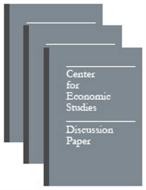Firm Heterogeneity, Misallocation, and Trade
Firm Heterogeneity, Misallocation, and Trade
Abstract
To what extent do domestic distortions influence the gains from trade? Using data from Chinese manufacturing surveys and U.S. census records, I document two novel stylized facts: (1) Larger producers in China exhibit lower revenue productivity, whereas larger producers in the U.S. exhibit higher revenue productivity. (2) Larger exporters in China exhibit lower export intensity, whereas larger exporters in the U.S. exhibit higher export intensity. A model of heterogeneous producers shows that only the U.S. patterns are consistent with an efficient allocation. To reconcile the observed patterns in China, I introduce producer- and destination-specific subsidies and estimate the model without imposing functional form assumptions on the joint distribution of productivity and subsidy rates. Accounting for distortions in China leads to substantially smaller estimated gains from trade.
Others in Series
Working Paper
Working Paper
Working Paper




